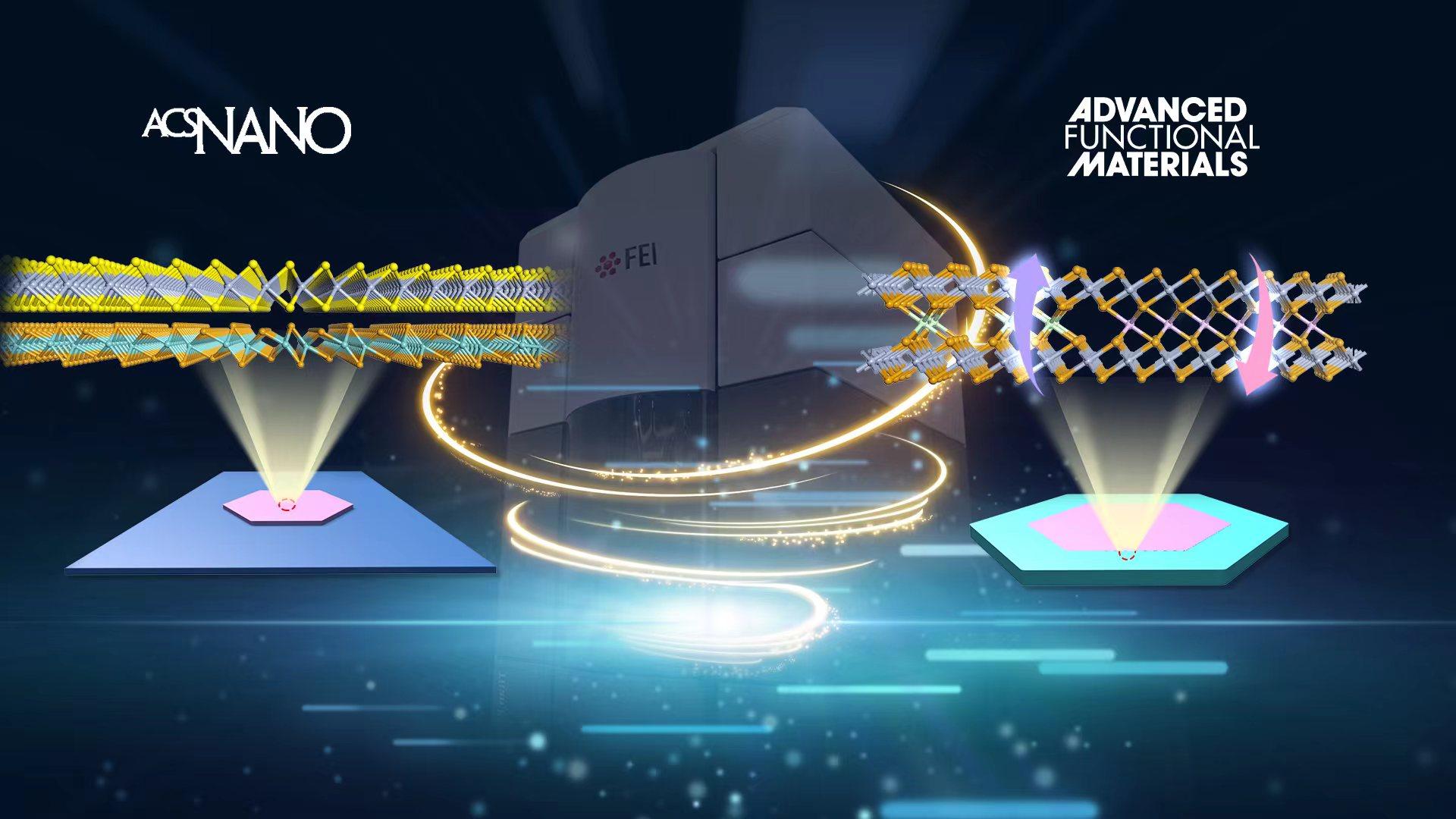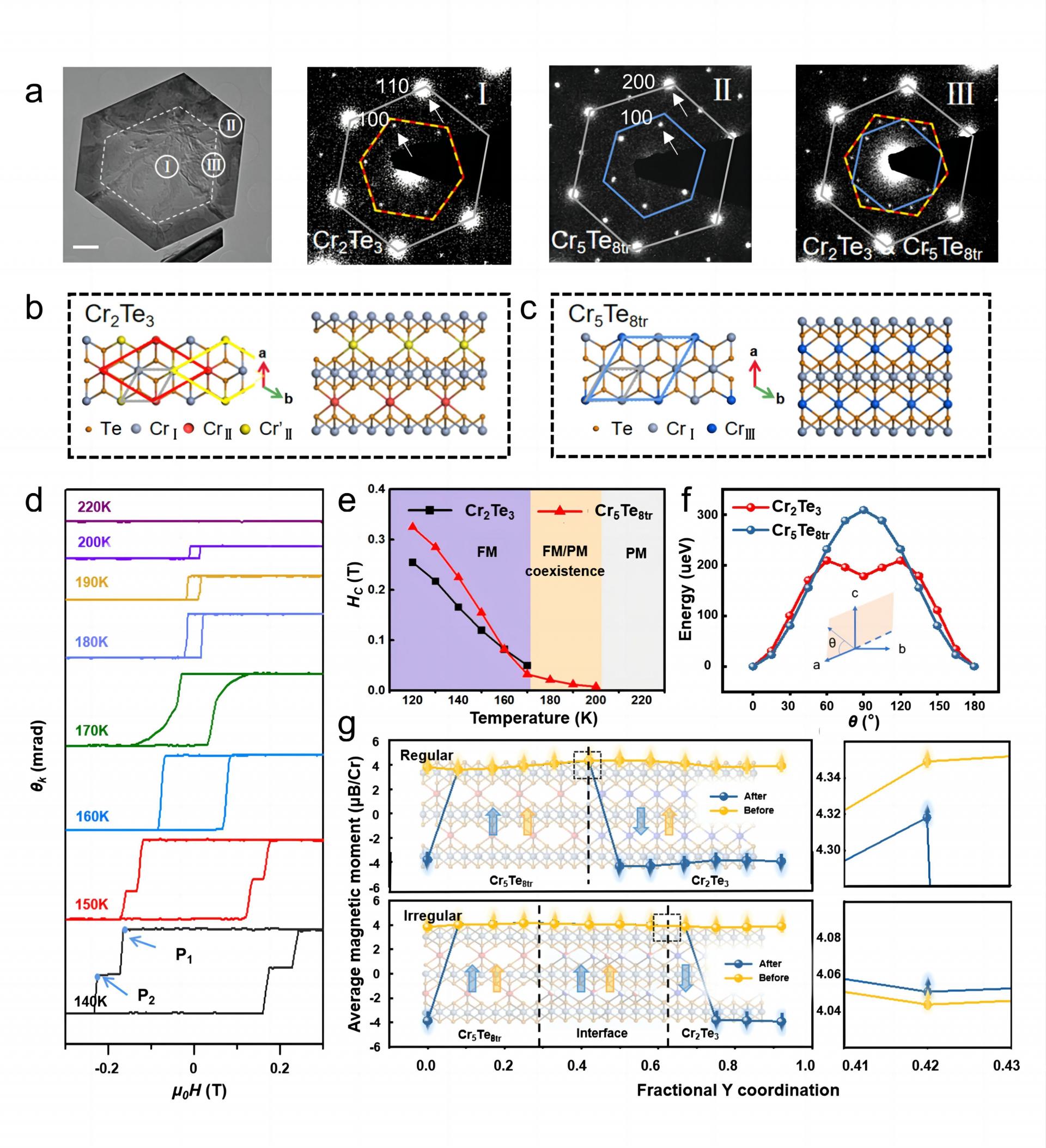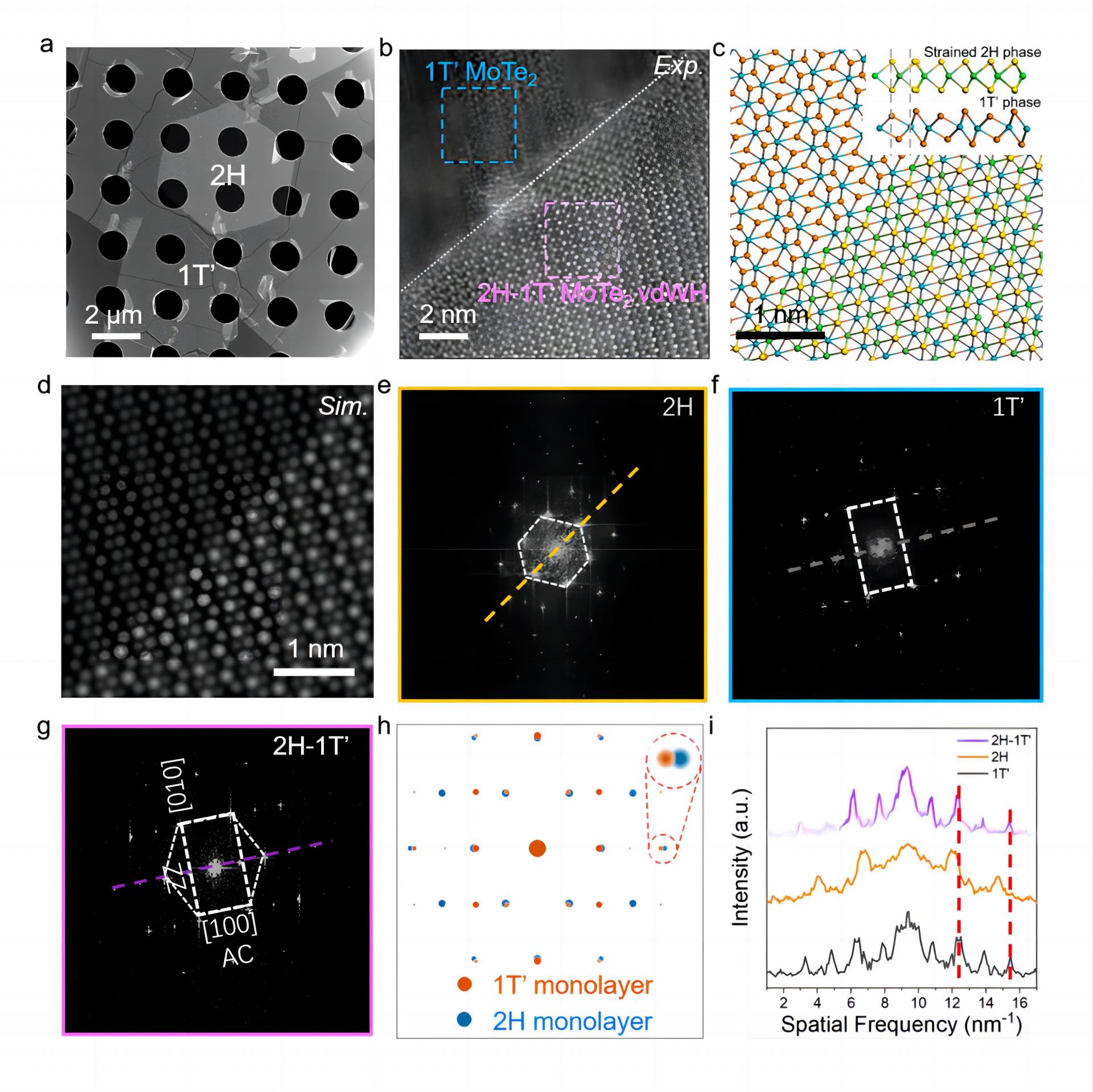Researchers make progress in preparation of two-dimensional heterojunctions and study of their magnetic and optical properties
2022-12-12
2D heterojunctions have attracted extensive attention for their interfacial coupling associated with unique electronic hybridization, band structure manipulation, interlayer excitons, as well as twisting effects. Transition metal dichalcogenides (TMDs) are promising candidates for constructing 2D heterojunctions due to a broad selection of electronic properties and dangling-bond-free layered surfaces, which offers great flexibility for both vertical and lateral heterostructure integration.
Recently, self-intercalated TMDs (TaxSy, TaxSey, CrxTey, etc.) with corresponding metal atoms intercalated into their van der Waals (vdW) gap provide an unprecedented new platform for building 2D hetero-stacked structures. Intercalants substantially modulate the electronic structure and introduce rich physicochemical properties, which can be tuned by varying the coverage and the spatial arrangement of the filled intercalation sites. It is expected that heterojunctions assembled from self-intercalated TMD can exhibit diverse and fascinating multiphase coupling behaviors.

Associate Professor Junhao Lin’s research group from the Department of Physics and the Shenzhen Key Laboratory of Advanced Quantum Functional Materials and Devices at the Southern University of Science and Technology (SUSTech), in collaboration with domestic and overseas research groups, has recently made important progress in the preparation and structural characterization of two-dimensional functional heterojunctions. They have focused on the relationship between structure and magnetic and optical properties.
Their relevant results were published in the journals of Advanced Functional Materials and ACS Nano.
Prof. Lin’s group used Chromium ditelluride (CrTe2) as the skeleton to construct transverse and vertical magnetic heterojunctions of different components of CrxTey by manipulating the arrangement of self-intercalated Cr atoms between vdW lattice layers. A Cr2Te3-Cr5Te8 lateral heterojunction prototype is demonstrated for the manipulation of magnetic moments under different magnitudes of magnetic excitation, showing a sharply stepped hysteresis loop with a dual spin-flip transition at high Curie temperatures up to 150 and 210 K by magneto-optical Kerr measurement. High-resolution scanning transmission electron microscopy and first-principles calculations reveal a preferred random location of Cr intercalants at the phase boundary, allowing lowering energy associated with crystal field splitting.
Based on the above results, the researchers finally proposed a mechanism to regulate the intrinsic magnetic order of the system by manipulating the distribution of intercalated Cr atoms in the lattice of CrxTey, providing a new degree of freedom for the magnetic moment modulation of the magnetic phase engineering of 2D magnetic heterojunctions.
Their research results were recently published in Advanced Functional Materials, entitled “Self-Intercalated Magnetic Heterostructures in 2D Chromium Telluride”.
Kangdi Niu, a graduate student at SUSTech, and Guotao Qiu, a graduate student at the University of Macau, are the co-first authors of this paper. Dr. Mengjiao Han at SUSTech (now Assoc. Prof. at the Songshan Lake Material Laboratory), Prof. Yongqing Cai at the University of Macau, and Assoc. Prof. Junhao Lin at SUSTech are the corresponding authors. SUSTech is the first affiliation of this paper.

Figure 1. Electron diffraction characterization and magneto-optical Kerr measurements of Cr2Te3-Cr5Te8 lateral heterojunction
Moreover, for most 2D TMDs materials, the different phase structures of the same element exhibit distinct physical properties. Among them, MoTe2 attracts intense attention owing to its facile structural transition between the semiconducting 2H and metallic 1T’ phases. Specifically, 2H-1T’ vdWHs are highly desirable due to the ohmic contact formation (30meV/Unit cell) in homogeneous stoichiometry, which significantly improves the device applications. However, the existing methods of vdWHs preparation are complex, lack accurate thickness control capabilities, and have the risk of interface contamination.
Prof. Lin’s team demonstrated the synthesis of the bilayer 2H−1T’ MoTe2 vdWHs in a one-step CVD growth method, which was realized by precisely manipulating the metal oxides/NaCl ratio and the reaction temperature to cover the small growth window that is overlapped for the two phases. Noteworthy, the team’s home-built glovebox interconnection system (GIS) provides inert atmosphere protection in all subsequent characterizations.
Using atomic-resolution scanning transmission electron microscopy (STEM) imaging, they found that the lattice parameters of the top 2H phase monolayer are regulated by the underneath 1T’ phase due to the epitaxial growth relationship with well-aligned armchair and zigzag edges, which has about 5% lattice distortion. This one-step growth provides a clean vdW interface for examining the epitaxial interlayer coupling effect. Combining the angle-resolved polarized Raman spectroscopy with first-principles calculations, they confirmed that such an epitaxial nature modulates the interlayer coupling between the 2H and 1T’ monolayers, resulting in a resonating hybrid vibration mode.
Their research results were published in ACS Nano, entitled “One-Step Growth of Bilayer 2H-1T’ MoTe2 van der Waals Heterostructures with Interlayer-Coupled Resonant Phonon Vibration”.
Zenglong Guo, a Ph.D. student at SUSTech, and Lei Wang, a Ph.D. student at the Institute of Metal Research, Chinese Academy of Sciences (IMR, CAS), are the co-first authors of this paper. Prof. Xingqiu Chen at IMR, CAS and Prof. Bilu Liu at the Tsinghua Shenzhen International Graduate School (Tsinghua SIGS) are the co-corresponding authors. Assoc. Prof. Junhao Lin at SUSTech is the final corresponding author, and SUSTech is the first affiliation of this paper.

Figure 2. Atomic structure characterization of the bilayer 2H-1T’ MoTe2 heterojunction
The above studies were supported by the Ministry of Science and Technology (MOST), National Natural Science Foundation of China (NSFC), and Guangdong International Science Collaboration Project. The authors also acknowledge the assistance of the SUSTech Core Research Facilities, especially technical support from the Pico Centre.
Paper links (In order of appearance above):
Advanced Functional Materials: https://doi.org/10.1002/adfm.202208528
ACS Nano: https://doi.org/10.1021/acsnano.2c04664




